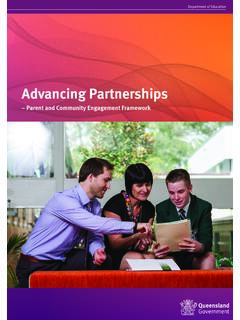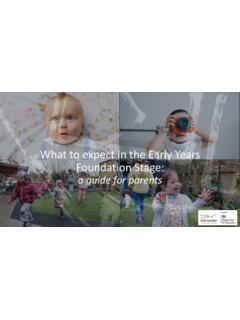Transcription of Special Educational Needs - KELSI
1 Special Educational NeedsMainstream Core StandardsWith thanks to provision or support should be provided in line with the Needs of the child or young person and is not dependent on any formal medical diagnosis or Educational document has been co-produced with parents, children and young people, schools, specialist teachers, Educational psychologists, colleagues from health and the local details of services and support please visit: the purposes of this document, schools and academies are referred to throughout as schools .Provision that the local area expects to be made available for children and young people with Special Educational Needs and/or disabilities attending mainstream schools Guidance for schools, parent/carers and professionals working with children and young people3 Section One: Expectations of all schoolsThis section outlines the expectations on all schools, according to the Needs of the child/young person.
2 Broadly speaking much of this section will be an integral part of the school s provision for all children. It outlines some of the practices and adaptations that are part and parcel of Quality First teaching (QFT): the inclusion of all pupils in high-quality everyday personalised teaching . The provision and strategies outlined in this section may be required for children and young people with SEN and/or disabilities but will undoubtedly be of benefit to many of the learners in the must put provision in place for learners with SEND taking in to account all learners individual Needs . Provision will be put in place for presenting Needs , with or without any formal diagnosis. Often, the impact of provision can be helpful in identifying and understanding and their families are at the centre of the work of all support andLocal Area ServicesChildren, young people and their familiesSchool andwider community4 Legal duties of schools in regard to Special Educational Needs and DisabilitySchools have clear duties in regard to the support of children and young people with Special Educational Needs ( SEN ) and/or disabilities under the Children and Families Act 2014 and SEN and Disability Code of Practice 2015 (the Code ).
3 Schools must have regard to the Code. This means that they should do what it says or be able to explain why they have not done so, and what alternative action has been law is underpinned by the principle that where a parent of a child with SEN, or a young person with SEN, wants a place in a mainstream setting, this must not be denied it on the basis that mainstream education is unsuitable, or that their Needs or disabilities are too great or complex. Mainstream schools must ensure that children or young people with SEN engage in the activities of the school together with children or young people who do not have Special Educational Needs (section 35 of the Children and Families Act 2014).The Best Endeavours DutyOne of the key duties is for the school to use their best endeavours to support children and young people with SEN.
4 (This applies to mainstream and alternative provision settings.) This means doing everything that could reasonably be expected of them. The law says: If a registered pupil or a student at a school or other institution has Special Educational Needs , the appropriate authority must, in exercising its functions in relation to the school or other institution, use its best endeavours to secure that the Special Educational provision called for by the pupil s or student s Special Educational Needs is made. (Section 66 of the Children and Families Act 2014)Here, the appropriate authority means the governing body of the school. The legal duty is theirs and not the head teacher of the school. These duties apply to all children and young people with SEN whether they have an EHC plan or not.
5 Using best endeavours means doing everything they can to meet the child or young person s SEN. It is a duty that requires the appropriate authority to enquire and ensure that the school is actually making the Special Educational provision that children and young people require. The best endeavours duty requires schools to consider obtaining specialist help, such as a speech and language therapist or Educational psychologist: where a pupil continues to make less than expected progress, despite evidence based support and interventions that are matched to the pupil s area of need, the school should consider involving specialists, including those secured by the school itself or from outside agencies. (SEND CoP paragraph for schools)The Equalities Act 2010 Schools have a range of duties under the Equalities Act 2010, including duties relating to for schools on these duties can be found at with children and young people, their families and carersExpectations of all settingsStrategiesThe setting works in partnership with parents, carers children and young people in decision school s SEND information report is co-produced with parents and and carers are signposted to Kent s Local Offer.
6 This is referenced on the school s and carers are aware of the range of communication channels available for sharing information about their are aware of any concerns about their child s progress or well-being at school and the steps that are being taken to explore if there are any barriers to learning across the are aware when their child has been identified as having an SEN or disability and know whether their Needs can be met through QFT or if they require more support and individually tailored interventions. They are involved in setting and reviewing targets for their learners are receiving SEN Support, meetings with parents/carers and when appropriate, the learner, are held a minimum of three times each academic year to review progress towards the identified outcomes and smaller step targets and to review the provision in place.
7 Formal and informal events take place to seek views in relation to SEN provision in the school, pupils and parent surveys, coffee mornings. A home school diary / book bag / text /email are used to support communication directly with parents/carers in addition to communication given via effective partnership with learners and parents is evident through their participation in assessment and review achieve or are working towards the Parental Engagement Award or similar and their parents/carers are able to share their long-term aspirations for their child s is a shared understanding that preparation for adulthood is an integral part of the learner s journey through are identified that support the learner to work towards achieving their possible, pupils are involved in the process of Assess, Plan, Do, Review (ADPR)
8 Of their provision, setting and reviewing targets and identifying their own learning are helped to understand their own barriers to learning and to value their understand and are able to contribute to the targets they are working to of all settingsStrategiesThe setting recognises, and responds to, the need for pastoral support for learners with SEND, bearing in mind the individual s social and emotional Needs and other relevant contextual is a calm and purposeful climate for learning where pupils feel they belong and that their contributions are can identify an agreed safe used in the classroom demonstrates unconditional positive regard for learners, restorative that learners with SEND can be vulnerable to bullying and an enhanced level of support and monitoring is in is used to develop wellbeing and and sensitivity towards difference (including SEND) are raised at a whole school level.
9 Work is done with classes, groups and individuals regarding specific Needs or conditions as appropriate. Learners with SEND are given opportunities to work with their peers to develop their understanding of difference as feel safe and valued. They know that they can approach staff and that their opinions and concerns are are provided with a named adult/s or key worker as a stable point of reference when attitudes, beliefs and perceptions towards individuals and groups are challenged, in the classroom, the wider school and voice is encouraged and acted school actively promotes the development of personal resilience and emotional wellbeing of the whole school school has achieved or is working towards the Kent School Award in Resilience and Emotional Wellbeing or similar school continuously improves and develops its approaches and practices that enable the full inclusion of all children and young people in school life and the wider give due regard to their duties under the Children and Families Act 2014.
10 The SEND Code of Practice 2015 and the Equalities Act 2010 when reviewing school use the Kent Inclusion Toolkit to audit current practice and formulate a development plan8 AssessmentExpectations of all settingsStrategiesA regular cycle of Assess, Plan, Do, Review is used to ensure that pupils with SEND are making strengths and difficulties in learning, communication, and social and emotional development are observed and monitored in different settings and contexts to inform are aware of pupils starting points so that expected progress can be measured across each key is used to inform planning and is given for individual pupils developmental profile and holistic ensure that formative assessment and feedback are a feature of lessons and evident in marking and assessment wide range of assessment strategies and tools are used to ensure a thorough understanding of the whole child or young have regular opportunities to evaluate their own performance.










